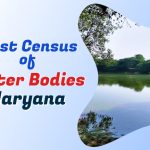 GOVERNMENT
OF INDIA
GOVERNMENT
OF INDIA
Please login using your email address as it is mandatory to access all the services of community.data.gov.in
 GOVERNMENT
OF INDIA
GOVERNMENT
OF INDIA
 In the modern era, global economy is very much dependent on the advanced technology, where considerable emphasis is placed on the contribution made by human resources, or you can say the human capital, to economic growth. The principle is that the relative contribution of every individual to the economic growth depends on their human capital – the education, knowledge, skills, competencies and other attributes that are relevant to economic activity.
In the modern era, global economy is very much dependent on the advanced technology, where considerable emphasis is placed on the contribution made by human resources, or you can say the human capital, to economic growth. The principle is that the relative contribution of every individual to the economic growth depends on their human capital – the education, knowledge, skills, competencies and other attributes that are relevant to economic activity. correlational evidence suggesting that education and economic growth are related, but the evidence points in a variety of directions attainment levels. During 2004-2012 Gross enrolment ratio (GER) in Classes IX-XII has sharply increased by 42% from 39.9 in 2004-05 to 56.8 in 2011-12 and per capita income at constant prices has also sharply increased by 58% from 24143 in 2004-05 to 38048 in 2011-12. (source : https://data.gov.in/catalog/gross-enrolment-ratio-ger#web_catalog_tabs_block_10 and https://data.gov.in/catalog/capita-income-all-india-and-madhya-pradesh#web_catalog_tabs_block_10 ).Increases in skill levels are linked to increase in incomes. For example, improved education can be associated with higher earnings and lower poverty rates.
correlational evidence suggesting that education and economic growth are related, but the evidence points in a variety of directions attainment levels. During 2004-2012 Gross enrolment ratio (GER) in Classes IX-XII has sharply increased by 42% from 39.9 in 2004-05 to 56.8 in 2011-12 and per capita income at constant prices has also sharply increased by 58% from 24143 in 2004-05 to 38048 in 2011-12. (source : https://data.gov.in/catalog/gross-enrolment-ratio-ger#web_catalog_tabs_block_10 and https://data.gov.in/catalog/capita-income-all-india-and-madhya-pradesh#web_catalog_tabs_block_10 ).Increases in skill levels are linked to increase in incomes. For example, improved education can be associated with higher earnings and lower poverty rates.Percentage of population Below Poverty Line  has also sharply decreased by 15.3% from 37.2 % in 2004-05 to 21.9 in 2011-12. (source: https://data.gov.in/catalog/below-poverty-line-india#web_catalog_tabs_block_10 and https://rbidocs.rbi.org.in/rdocs/Publications/PDFs/162T_SHE130914L.pdf ).
has also sharply decreased by 15.3% from 37.2 % in 2004-05 to 21.9 in 2011-12. (source: https://data.gov.in/catalog/below-poverty-line-india#web_catalog_tabs_block_10 and https://rbidocs.rbi.org.in/rdocs/Publications/PDFs/162T_SHE130914L.pdf ).
 During this period, monthly per capita expenditure (MPCE) (Uniform Reference Period) – Urban and Rural have increased by 129% and 128% respectively. It’s truer that in the population, better employment prospects and the increasing earnings that come with higher educational attainment can all contribute to growth and prosperity.Further analysis and research could deepen understanding of these fairly substantial effects. It could be, for example, that growth in literacy proficiency is a proxy for important omitted variables that influence the rates of both literacy and income.
During this period, monthly per capita expenditure (MPCE) (Uniform Reference Period) – Urban and Rural have increased by 129% and 128% respectively. It’s truer that in the population, better employment prospects and the increasing earnings that come with higher educational attainment can all contribute to growth and prosperity.Further analysis and research could deepen understanding of these fairly substantial effects. It could be, for example, that growth in literacy proficiency is a proxy for important omitted variables that influence the rates of both literacy and income.
Understanding the components that contribute to economic growth of a country was always a hot cake of discussions of economists. Most developed economies, has evolved from one based on resources and manufacturing to one based on information, knowledge and skills, growing emphasis has been placed on the role played by human capital – the skills and knowledge embodied in people. Because direct measures of skill have been hard to develop, analysts have relied on indirect measures of human capital, based on the assumption that individuals with more education will also have more knowledge and skill than those with less education.
Today, the data clearly tell us that the closest thing a country has to a silver bullet for creating a successful 21st century economy and an improved quality of life—better health, lower crime, citizens who contribute—is a dramatic increase in the number of college educated people in its workforce age population.
It is past time to ready ourselves for the global challenge, be determined to reach goal of increased education attainment and economic development that will secure our future.

Comprehensive Analysis of the Mahatma Gandhi Natio...
This infographics on Comprehensive Analysis of the Mahatma Gandhi National Rural Employment Guarantee Act (MGNREGA)
Posted on: October 18th, 2023

First Census of Water Bodies in Haryana...
For the first time in the history of the country, the Ministry of Jal Shakti has conducted the first-ever census of water bodies in India. ...
Posted on: August 31st, 2023